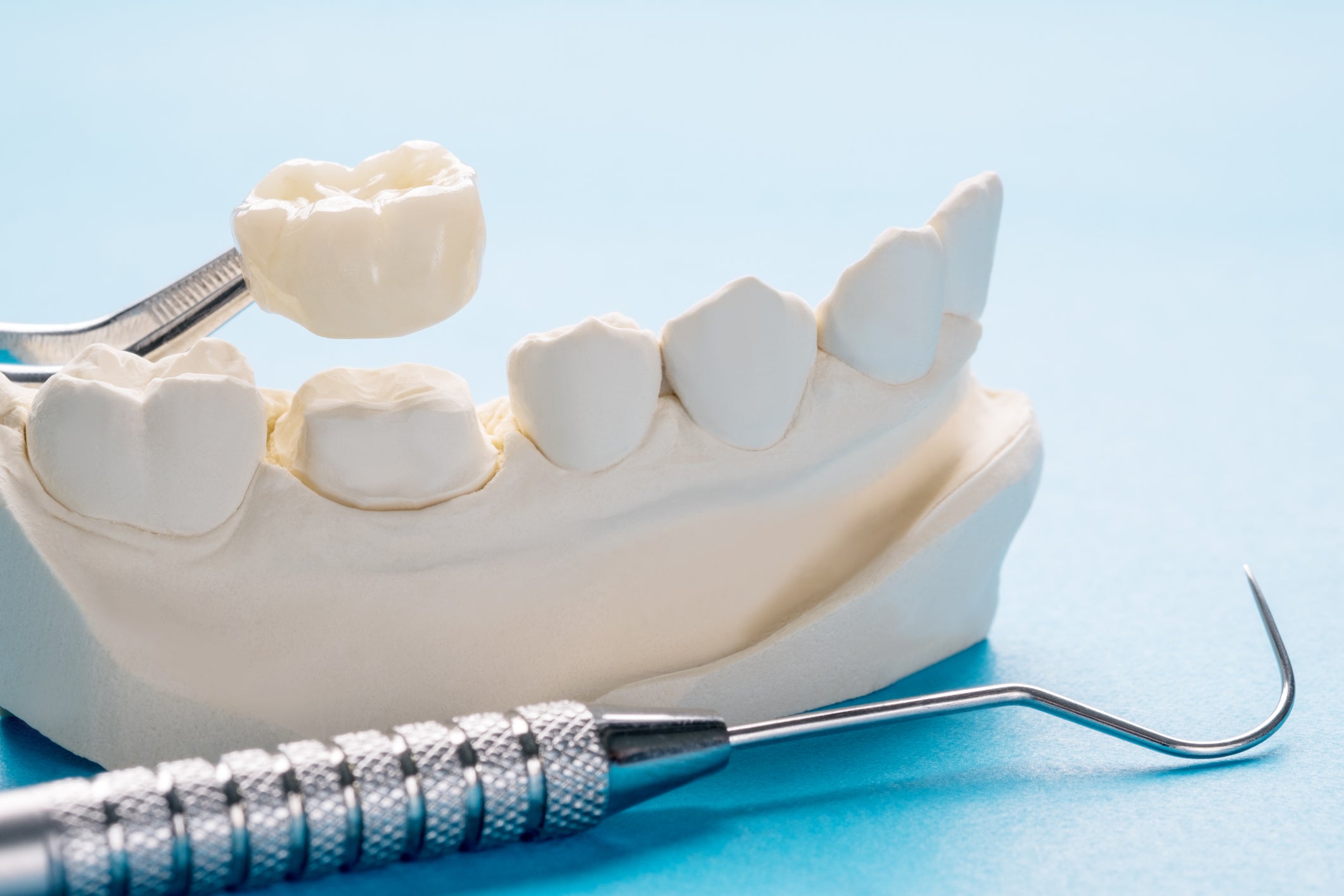-
8 Signs You May Need to Replace Your Dental Crown

Dental crowns do a great job of protecting damaged teeth, allowing you to chew normally, and keeping your smile looking great. Unfortunately, they don’t last forever. The tricky part is a failing crown isn’t always obvious until it becomes a problem you can’t ignore. Watch out for these eight signs of trouble so it doesn’t catch you off-guard. Continue reading “8 Signs You May Need to Replace Your Dental Crown”
-
What Are Crowns and When Do You Need Them?

Dental Crown.
So, your dentist has just told you that you need a crown, and you’re flattered! You didn’t expect to be treated like royalty, and yet, it’s all about to happen. You eagerly await your coronation. Though we hate to interrupt this flight of fancy, we have some bad news for you: it’s not that kind of crown. A crown is actually a cap for damaged teeth, and if your dentist is telling you that you need one, it means you have a tooth problem.
Why would someone need a crown, anyway? It could be that you have a cavity to large for a filling. It might also be that you have a tooth that’s worn down, cracked, or weak, and needs a crown to protect it. Similarly, if you’ve had a root canal, your fragile tooth may need the protection of a crown. If you need a dental bridge or implant, you may also need a crown.
There are different types of crowns, made of a variety of materials. Your dentist will discuss your options with you, and you’ll need to consider several factors, like the cost, strength, and durability, as well as where the crown will sit in your mouth. Generally, there are four different materials from which to choose when deciding on a crown.
- Ceramic crowns, which are actually made of a porcelain-based material, are typically used for front teeth, because they blend with the natural color of your teeth.
- Crowns made of porcelain fused to metal are extremely durable.
- Gold alloy crowns, made of gold, copper, and other metals, bond well to the tooth and don’t fracture or wear away the tooth.
- Base metal alloy crowns, made of non-noble metals, are very strong and resistant to corrosion.
In addition to the materials from which they’re made, crowns come in a variety of types. Sometimes, your dentist will place a temporary crown in your mouth while you’re waiting for a permanent crown, which you will get at a second appointment. In other cases, a crown can be placed in a single appointment, if your dentist offers computer-aided design and manufacturing. Some crowns don’t cover the whole tooth. These are called onlay or ¾ crowns. Your dentist can let you know what type of crown you need and how many appointments will be required.
Getting a crown is not typically painful. You will be given a local anesthetic, after which your dentist will get the tooth ready for the crown by removing some enamel, as well as any decay or filling material. The goal is to start with a healthy tooth structure on which the crown can be built. An impression or intraoral 3D scan is made, so that the crown will fit perfectly. Then the dentist places either the temporary or permanent crown, depending on what’s required. Once you have your new crown, take care of it by brushing, flossing, and refraining from eating hard foods like ice, which could break your crown. Crowns typically last seven to 15 years, but with careful maintenance, they can last much longer.
If you need a crown, make an appointment with the dentist voted best in New York. At Park 56 Dental Group, we offer pediatric, prosthodontics, endodontics, oral surgery, Invisalign®, emergency, and sedation dentistry, all at the highest level of treatment. We serve the Midtown, Central Park, Upper East Side, Park Avenue, and all surrounding Manhattan and New York areas, with a patient-centered practice that has hours to fit your schedule. Schedule your complimentary consultation today by contacting us online or calling us at (212) 826-2322.
RECENT POSTS
categories
- Uncategorized
- Cosmetic Dentistry
- Veneers
- Healthier Teeth
- Teeth Whitening
- Dental Health
- Video
- Dental Emergencies
- Invisalign
- Dental Implants
- Root Canal
- Sedation Dentistry
- Infographic
- Dental Crowns and Bridges
- Dental Anxiety
- Gum Disease
- COVID-19
- Bad Breath
- New York Dentist
- Cut out sugar
- General Dentistry
- Oral Health
- Oral Cancer
- Dry Mouth
- Gum Health
- Toothache
- Dental Sealants
- Cavities



